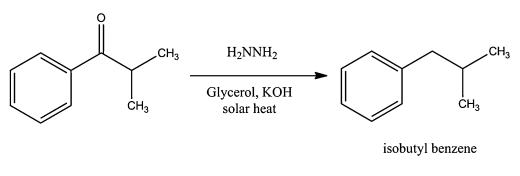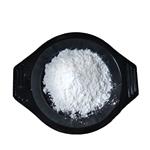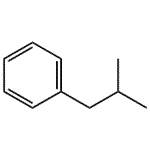Chemical Properties
Isobutyl Benzene is an organic, aromatic, neutral and colourless liquid that has a specific gravity of around 0.852. Less dense than water and insoluble in water, soluble in ethanol, ether, benzene and acetone. Vapors heavier than air.
Physical properties
Clear, colorless, liquid with an odor resembling butylbenzene, tert-butylbenzene, ethylbenzene, or
toluene. An odor threshold concentration of 80 μg/kg was reported (quoted, Verschueren, 1983)
Uses
Isobutylbenzene is used as an intermediate for perfumery and analgesic anti-inflammatory (Ibuprofen). It is also used as an internal standard in the study of increased pigmentation and floral scent levels in Pap1-transgenic petunia.
Definition
ChEBI: Isobutylbenzene is an alkylbenzene that is benzene carrying an isobutyl substituent.
Preparation
Isobutylbenzene synthesis: Isobutyrophenone, underwent a Wolff–Kishner reduction using hydrazine hydrate and strong base conditions to synthesize isobutyl benzene. The solvent for this reaction was replaced with the more sustainable solvent glycerol. The glycerol for this reaction was obtained from the synthesis of biodiesel. The reaction was allowed to heat at reflux (149–155 °C) for a period of three hours. An average 51 % yield of isobutyl benzene was obtained from the solar synthesis, compared to a 55 % yield from an in-lab, electrical heating analysis.

General Description
Isobutylbenzene is synthesized by the isopropylation at the side chain over Na, K and Cs exchanged zeolites.
Hazard
Moderate fire risk. Toxic in high concentration, a skin and eye irritant.
Environmental Fate
Biological. Oxidation of isobutylbenzene by Pseudomonas desmolytica S44B1 and
Pseudomonas convexa S107B1 yielded 3-isobutylcatechol and (+)-2-hydroxy-8-methyl-6-oxononanoic
acid (Jigami et al., 1975).
Chemical/Physical. Complete combustion in air yields carbon dioxide and water vapor.
Isobutylbenzene will not hydrolyze because it has no hydrolyzable functional group.








